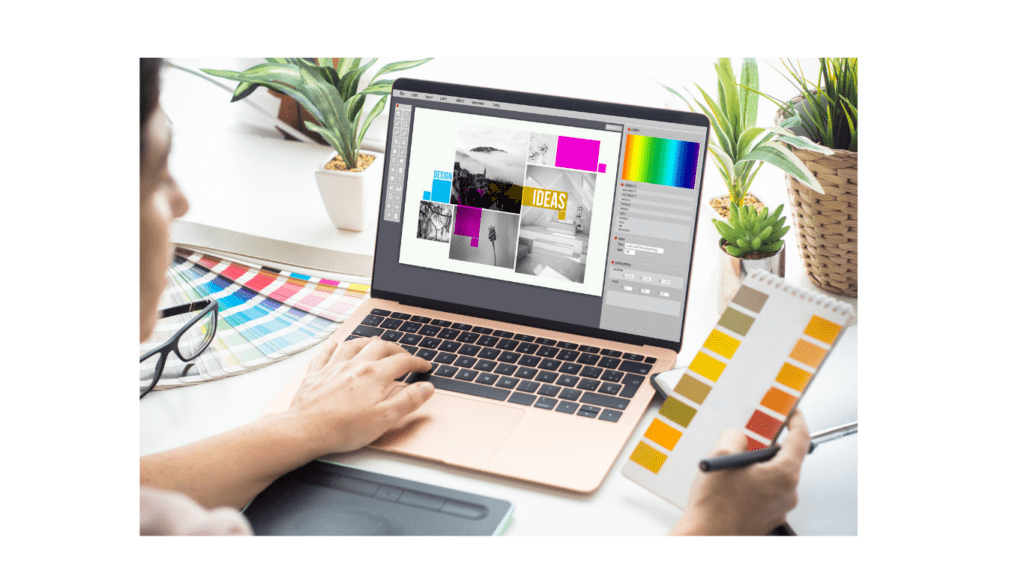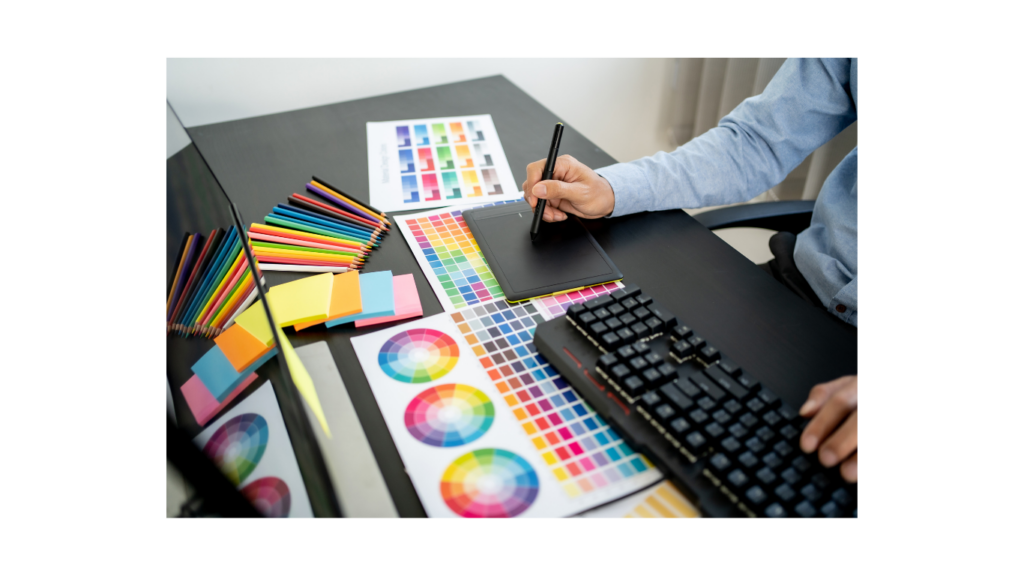When it comes to graphic design, your portfolio book is key in helping you land new clients and projects. In this blog post, we will read about graphic design portfolio books and the tips which will help you build an effective graphic design portfolio book. We will also read about the need and importance of an effective graphic design portfolio book in detail. So first, let’s read what a graphic design portfolio is?
Table of Contents
Toggle- Graphic Design Portfolio Book
- Tips For Building Your Graphic Design Portfolio Book
- 1. Start With Your Best Work:
- 2. Use High-Quality Images:
- 3. Keep It Simple:
- 4. Be Creative:
- 5. Use Your Portfolio Book To Tell A Story:
- 6. Make It Easy To Contact You:
- 7. Keep It Updated:
- 8. Use Strong Visuals:
- 9. Be Selective With Your Work:
- 10. Use Concise Descriptions:
- 11. Get Feedback From Others:
- 12. Use A Professional Printing Service:
- 13. Proofread Your Work:
- 14. Keep It Organized:
Graphic Design Portfolio Book
A graphic design portfolio book is a collection of your best and most recent work, usually presented in a physical or digital book format. It is used to showcase your skills, style, and experience to potential employers, clients, or collaborators.
A question might come to your mind What should your portfolio look like? Right? Your portfolio book should be well-designed and professional-looking, as it will be one of the first things that people see when they are considering working with you. It should be clear, concise, and easy to navigate, with strong visuals that represent your work in the best possible light.
Read about 4 Ways To Turn Your Graphic Design Into Animated Videos to make creative videos.
Tips For Building Your Graphic Design Portfolio Book
Now that we know what a portfolio book is, let’s move on and see the tips which will help you build an effective graphic design portfolio book.
1. Start With Your Best Work:
When it comes to building your portfolio book, always start with your best work. The first few pages of your book are the most important, as they will be the first thing that people see. Your best work will help to make a strong first impression and give people an idea of your skills and experience. For example, as a graphic designer, you may want to showcase your skills in branding, web design, or print design.
Our blog post “Graphic Design Is My Passion: The History And Meaning Of The Meme” might also be helpful, try it as well.
2. Use High-Quality Images:
When choosing images for your portfolio book, always use high-quality images that are clear and easy to see. Avoid using low-resolution images, as they will make your work look bad. Also, make sure to use images that accurately represent your work. For example, if you are a web designer, you may want to include screenshots of your work, rather than just using stock photos.

3. Keep It Simple:
When it comes to your portfolio book, less is more. Avoid overcrowding your pages with too much text or too many images. Instead, focus on quality over quantity. Use strong visuals and concise descriptions to showcase your work in the best possible light. For example, as a graphic designer, you may want to include a few images of your work, along with a short description of each project.
4. Be Creative:
Building an effective and attractive graphic design portfolio book is creativity. Your portfolio book is an opportunity to show off your creativity, so make sure to use it! Showcase your unique style and approach to graphic design. Use creative layouts, and interesting visuals to make your work stand out. To make it more attractive, you can use graphic design portfolio templates.

5. Use Your Portfolio Book To Tell A Story:
Your portfolio book should tell a story about who you are as a graphic designer. Use it to showcase your journey, and how you got to where you are today. Include information about your education, experience, and skills. Also, be sure to include a section about your process and approach to graphic design. You can better tell your success story to the readers through your graphic design portfolio book.
If you are interested in understanding the difference between product designer and UX designer, click here Product Designer or UX Designer: What’s The Difference?
6. Make It Easy To Contact You:
Your graphic design portfolio book should make it easy for your clients to contact you when they require your services. Make sure to include your contact information in your portfolio book. Include your email address, phone number, and website. This will make it easy for people to get in touch with you when they need your graphic design services.
7. Keep It Updated:
Keeping your portfolio book is of utmost importance. Your graphic design portfolio book should be regularly updated with your latest work. This will show your clients that you are actively working as a graphic designer and that you are always looking for new opportunities. You cannot rely on the old styles and designs consistently rather you should keep them updated.
8. Use Strong Visuals:
Remember, your portfolio book is a visual representation of your work, so it is important to use strong visuals throughout. Use high-quality images that represent your work in the best possible light. For example, as a graphic designer, you might want to include images of your designs, logos, or illustrations.
9. Be Selective With Your Work:
When it comes to adding work to your portfolio book, it is important to be selective. Only include your best and most recent work, as this will give people the best idea of your skills and experience. There is no need to include every project you have ever worked on, as this will only clutter your portfolio book.
10. Use Concise Descriptions:
Another important tip for building your graphic design portfolio book is to use concise descriptions. When describing your work, be sure to focus on the most important details. Avoid using long-winded descriptions, as they will only serve to clutter your portfolio book. Instead, focus on describing your work clearly and concisely. When you include unnecessary details like your design process, it will only serve to distract from your work.
11. Get Feedback From Others:
When it comes to building your graphic design portfolio book, it is important to get feedback from others. Ask your friends, family, and peers for their honest opinion. This will help you to identify any areas that need improvement. Getting feedback from others is a great way to ensure that your portfolio book is the best it can be.
12. Use A Professional Printing Service:
When it comes to printing your graphic design portfolio book, it is important to use a professional printing service. This will ensure that your book is printed to the highest possible quality. When it comes to printing your portfolio book, you should never skimp on quality.
13. Proofread Your Work:
Before you print your graphic design portfolio book, it is important to proofread your work. This will help to ensure that there are no errors or typos in your book. Proofreading your work is a crucial step in the graphic design portfolio book-building process.
14. Keep It Organized:
Your portfolio book should be divided into sections that showcase your work in a logical and easy-to-follow manner. This will make it easy for potential clients to navigate and understand your work.
We hope the above-mentioned tips will help you build an effective graphic design portfolio book.






